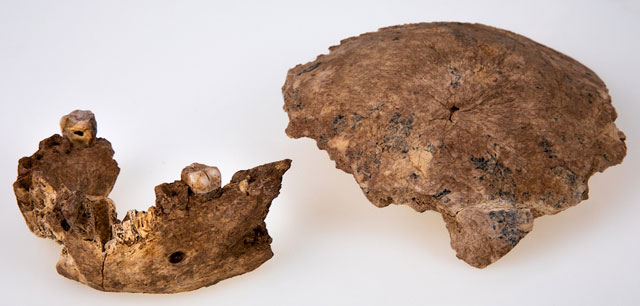A scientific paper has been published this week in the journal “Science” that suggests that interactions between different species of human during the Middle and Late Pleistocene Epoch were much more complex than previously thought.
Researchers working in Israel have identified a previously unknown type of ancient human that lived alongside our own species (H. sapiens) more than 100,000 years ago. The remains consisting of a fragment from the top of the skull (parietal bones), the mandible and a lower second molar tooth discovered near the city of Ramla in the Central District of Israel, have been dated to around 140,000 – 120,000 years ago and these fossils represent one of the very last members of an ancient human group that may have been the ancestors of the Neanderthals.

Human Remains Found Amongst Stone Tools and Other Fossil Bones
Yossi Zaidner from the Institute of Archaeology at the Hebrew University of Jerusalem found the fossils during excavations to salvage Middle Pleistocene material and fossils that had been uncovered during construction work. Thousands of fossil bones depicting a rich and varied fauna including aurochs, horses and deer were also recovered. Stone tools were also found, analysis of these tools suggest they were constructed in the same manner that modern humans of the time also made their implements.
The researchers made virtual reconstructions of the fossils to permit their analysis using sophisticated computer software and to compare them with other hominin fossils from Europe, Asia and Africa. The results suggest that the Nesher Ramla hominin fossils represent late survivors of a population of humans who lived in the Middle East during the Middle Pleistocene period.
Rolf Quam, one of the co-authors of the scientific paper commented:
“The oldest fossils that show Neanderthal features are found in Western Europe, so researchers generally believe the Neanderthals originated there. However, migrations of different species from the Middle East into Europe may have provided genetic contributions to the Neanderthal gene pool during the course of their evolution.”
Everything Dinosaur acknowledges the assistance of a press release from Binghamton University State University of New York in the compilation of this article.
The study, “A Middle Pleistocene Homo from Nesher Ramla, Israel,” was published in Science, along with a companion paper discussing the culture, way of life and behaviour of the Nesher Ramla hominin.
The Everything Dinosaur website: Prehistoric Animal Models and Figures.






Leave A Comment